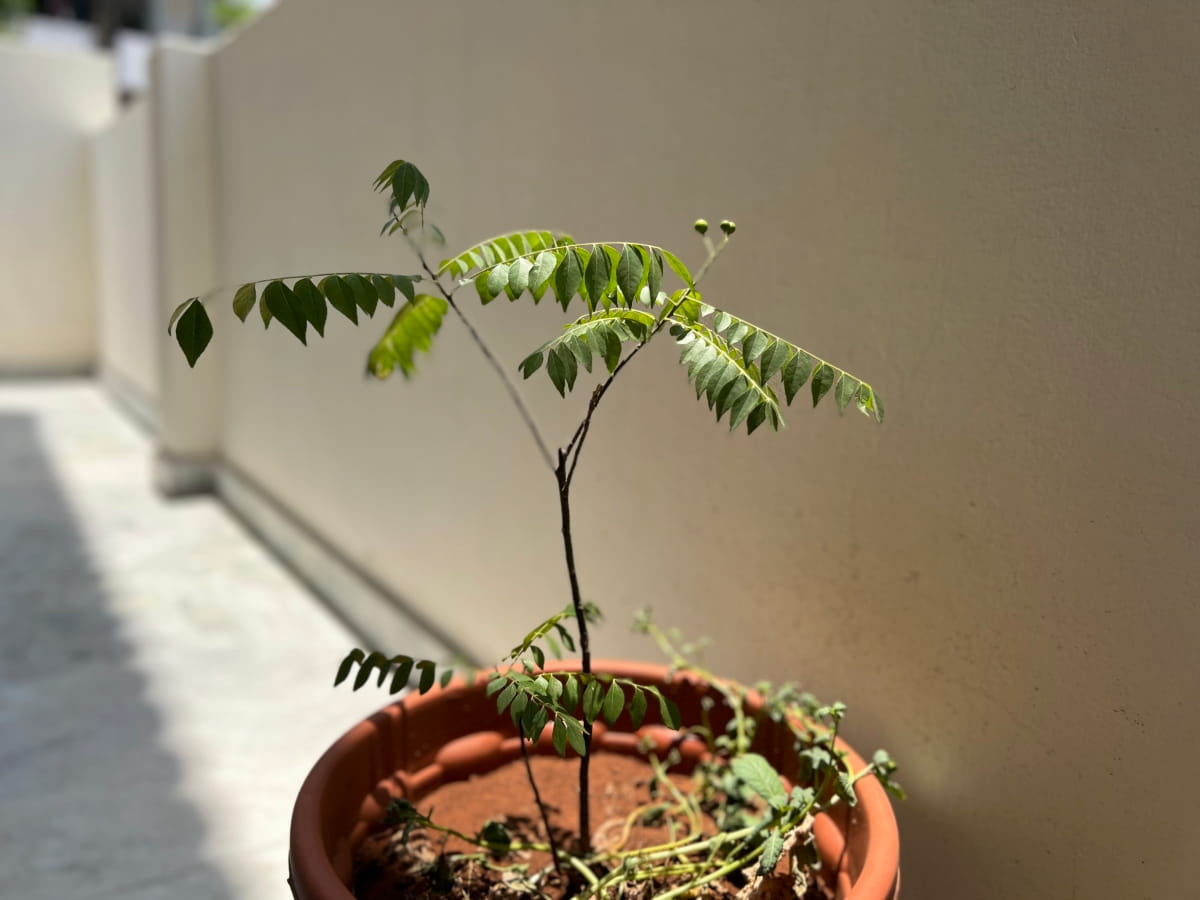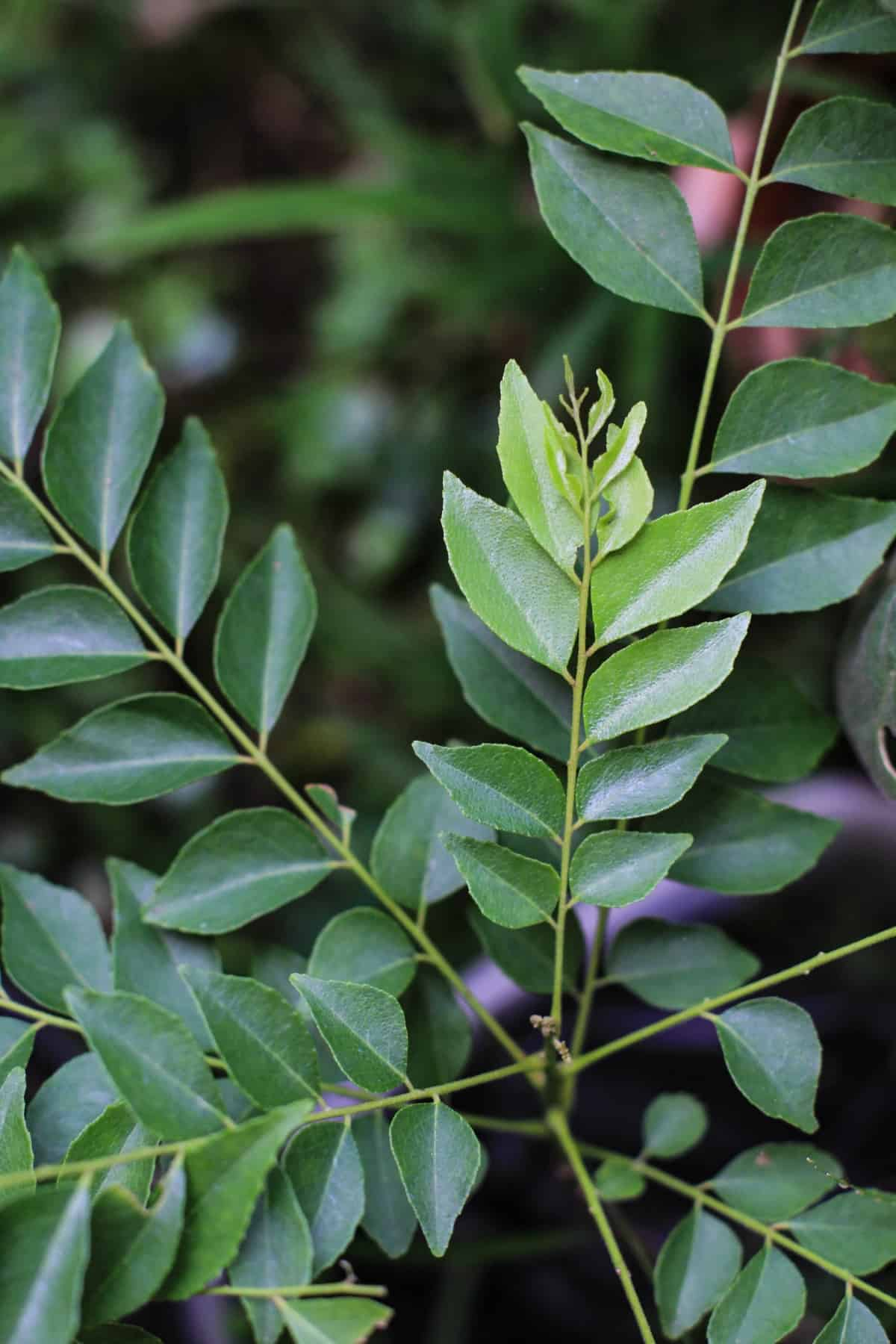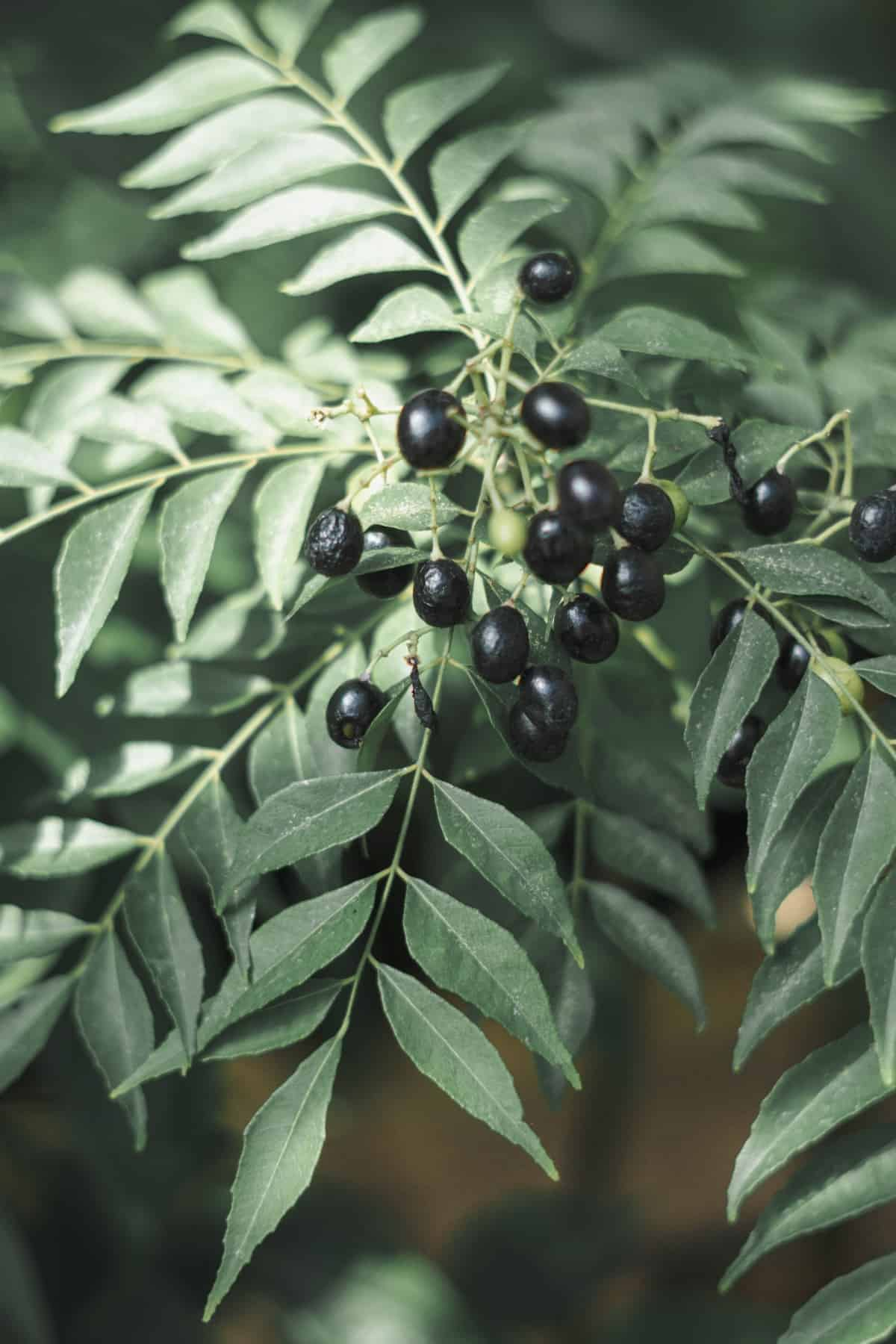Curry leaf plants, with their unmistakable aromatic quality, are much-loved components of many South Asian dishes, providing a unique taste and a wealth of nutrients. Yet, these plants, like all living organisms, can suffer from a range of problems, from diseases to simple neglect, leading them to wilt, lose leaves, or even die entirely. This article will learn ten causes behind a dying curry leaf plant and how to bring it back to health.

10 Causes of a Dying Curry Leaf Plant
Underwatering and Its Solutions
The most common cause of your curry leaf plant losing its leaves could be underwatering. Native to the tropics, curry leaf plants thrive in humid, well-watered conditions. Underwatering can cause dehydration in the plant, leading to wilting and browning of the leaves. The plant’s leaves may dry up, a clear sign of underwatering. Regular watering, in moderation, can revive the plant. Always ensure the topsoil is dry before the next watering. If your curry leaf plant is drying up, adjust your watering schedule, ensuring the plant receives enough water without waterlogging the soil.
Overwatering and Recovery Methods
Conversely, overwatering is another common problem. The symptoms of overwatering can be misleading, often appearing similar to those of underwatering. Yellowing leaves and root rot indicate overwatering. Overwatering can lead to the roots being deprived of oxygen, leading to the plant’s death. To rectify this, reduce the watering frequency and ensure the plant has proper drainage. A well-draining soil mix can prevent water from pooling at the roots and causing further damage.
Lack of Sunlight and How to Compensate
Insufficient sunlight can be another cause of curry leaf plants wilting or dying. These plants are sun-lovers and need plenty of light to photosynthesize effectively. To achieve optimal growth of indoor plants, it is crucial to place them in a well-illuminated window where they can receive a minimum of six hours of direct sunlight each day. If the plant still seems to suffer, consider investing in grow lights to supplement the natural light.
Pest Infestations and Their Control
Pest infestations can seriously harm your curry leaf plant. Spider mites, scale insects, and aphids are prevalent nuisances that consume the foliage and sap of plants, leading to gradual wilting and eventual demise. The existence of these pests can be discerned through a thorough examination of the plant, observing the occurrence of diminutive discolored areas or the presence of a viscous substance on the leaves. If pests are found, use a mild insecticide or neem oil to treat the plant. Regular inspection and early intervention are key to preventing severe pest damage.
Over-fertilization and Its Prevention
While fertilizing your curry leaf plant is crucial for its growth, over-fertilization can be harmful. Excess fertilizer can cause salt buildup in the soil, leading to leaf burn, browning of leaves, and even plant death. If your curry leaf leaves turn brown, this could be a sign of over-fertilization. Flush the soil with water to wash out the excess fertilizer. In the future, follow the recommended dosage and frequency for fertilizing.
In case you missed it: Homemade Fertilizers to Make Curry Leaf Plant Bushy: How to Compost and Prune, Tips for More Branches

Temperature Stress and How to Alleviate It
Temperature stress can also contribute to a dying curry leaf plant. Being tropical, curry leaf plants prefer warm temperatures and may not tolerate extreme cold or frost. Sudden temperature changes can stress the plant, causing it to lose leaves or die. If the plant is outdoors, consider bringing it inside during cold weather. If the plant is indoors, ensure it’s not near any drafts or heat vents that could cause sudden temperature changes.
Disease and Appropriate Treatment
Pathogenic conditions like leaf spot and root rot can lead to significant harm to your curry leaf plant, resulting in the discoloration and deterioration of its foliage. Leaf spot, caused by fungi or bacteria, present as black or brown spots on the leaves. Root rot, often resulting from overwatering, can cause the plant to wilt and its roots to decay. Upon identifying these diseases, prune the infected parts of the plant and treat it with a suitable fungicide or bactericide. Ensure the plant has proper watering and ventilation to prevent future disease occurrences.
Nutrient Deficiencies and How to Correct Them
Nutrient deficiencies can also lead to a dying curry leaf plant. The lack of nutrients like nitrogen, phosphorus, and potassium can result in yellowing or browning of leaves and hindered growth. Regular application of a balanced, slow-release fertilizer can help rectify this issue. If you notice signs of nutrient deficiency, consider testing your soil to understand which nutrients are lacking and adjust your fertilization practices accordingly.
Transplant Shock and Methods to Reduce It
Transplant shock can be a significant issue, especially if you’ve recently moved your curry leaf plant. This stress can cause the plant to wilt and lose its leaves as it adjusts to the new environment. If your plant experiences transplant shock, maintain a consistent watering routine, ensure sufficient light, and consider using a root growth stimulator to help the plant establish itself in its new location.
Poor Soil Quality and Improvement Techniques
Lastly, poor soil quality can contribute to your curry leaf plant’s demise. Curry leaf plants prefer well-draining, fertile soil with a slightly acidic pH. If your plant is dying, the soil might be too compact, lacking in nutrients, or have the wrong pH. Enhancing the soil’s composition and nutritional value can be achieved through the incorporation of organic materials such as compost. Additionally, based on your soil test results, you may adjust the soil’s pH by adding lime to rise the pH or sulfur to lower it.
In case you missed it: Frequently Asked Questions About Curry Leaf Farming

Conclusion
If you’ve ever found yourself despairing, asking “how to revive a dead curry leaf plant,” consider the issues outlined above. Addressing these common curry leaf plant diseases and problems promptly can help restore your plant to its health. While some plants may be too far gone to save, understanding these issues can help prevent future problems and ensure the success of your curry leaf plants. Remember, regular inspection and prompt action are key to maintaining healthy plants.
- Ultimate Guide to Ossabaw Island Hog: Breeding, Raising, Diet, and Care
- Ultimate Guide to Juliana Pig: Raising Facts, Size, Diet, Care, and Lifespan
- Raising Lleyn Sheep: Disadvantages, Price, Uses, Characteristics, and Care
- Ultimate Guide to Meishan Pig: Breed Facts, Breeding, Raising, and Care
- Ultimate Guide to Teacup Pigs: Raising, Diet, Lifespan, Cost, and Care
- Guide to Raising Poll Dorset Sheep: Facts, Profile, Characteristics, Uses, and Care
- Ultimate Guide to Bighorn Sheep: Characteristics, Diet, Lifespan, Breeding, and Lifecycle
- Ultimate Guide to Raising Katahdin Sheep: Farming Facts, Breed Profile, Uses, and Care
- Ultimate Guide to Raising Oreo Cows: Belted Galloways Farming Facts, Profile, Uses, and Care